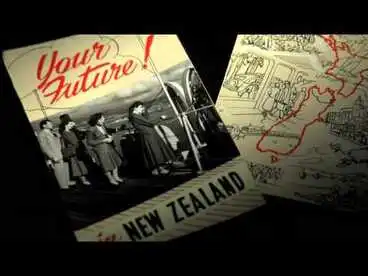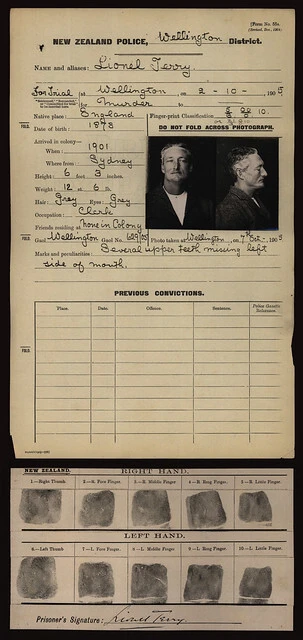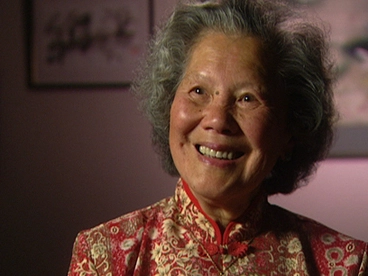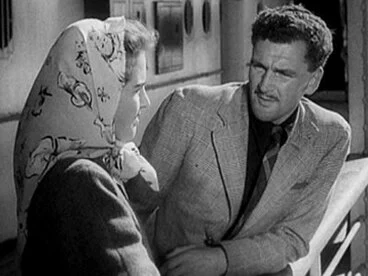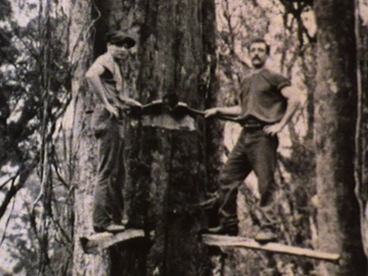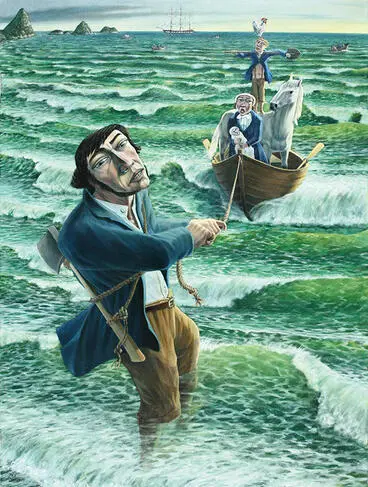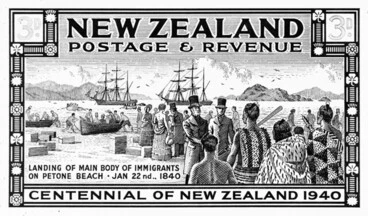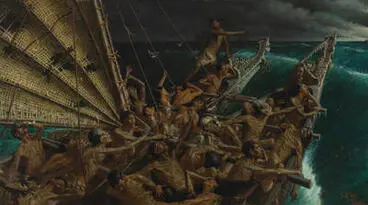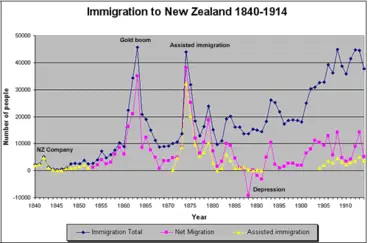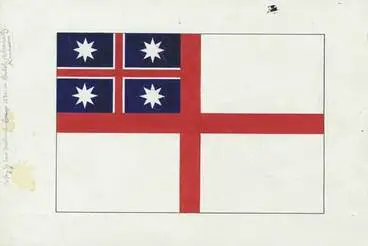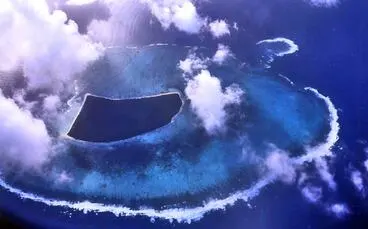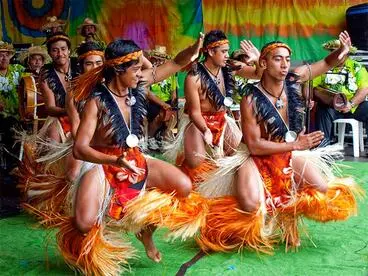Immigration to Aotearoa New Zealand
A DigitalNZ Story by National Library of New Zealand Topics
The arrival of Māori to Aotearoa, then immigrants from Great Britain was followed by people from all over the world. This topic is about migrants, refugees, journeys, transport and what has made New Zealand a popular migrant nation. SCIS no. 1827930
Scandinavian settlers at Kopuaranga
Wairarapa Archive
Immigration promotion: Auckland, 1850s
Manatū Taonga, the Ministry for Culture and Heritage
"Immigration - Important Notice"
Museum of New Zealand Te Papa Tongarewa
Migration will not return to pre-Covid levels
Services to Schools
The Anti-Asiatic League were opposed to Chinese immigration.
CHINESE IMMIGRATION. (Poverty Bay Herald, 10 September 1908)
National Library of New Zealand
Somali family reunion, Wellington Airport, New Zealand - Photograph taken by Ross Giblin
Alexander Turnbull Library
Child migrants, Wellington
Manatū Taonga, the Ministry for Culture and Heritage
Children of the Migration
NZ On Screen
Melting pot: A cuisine of immigrants
Public Address
Moments in Time - Immigration
Archives New Zealand Te Rua Mahara o te Kāwanatanga
Murder of Joe Kum Yung by Lionel Terry
Archives New Zealand Te Rua Mahara o te Kāwanatanga
New Faces Old Fears
NZ On Screen
The settling of Eketāhuna
Museum of New Zealand Te Papa Tongarewa
Journey for Three
NZ On Screen
Here to Stay
NZ On Screen
The Story of Seven-Hundred Polish Children
NZ On Screen
Stamp of NZ Company settlers arriving in Pito-one (Petone), 1840
Archives New Zealand Te Rua Mahara o te Kāwanatanga
Immigration barracks, 1841
Manatū Taonga, the Ministry for Culture and Heritage
The diary of Thomas Stokes
In 1879, 20 year old Thomas Stokes and his family immigrated to New Zealand.
Alexander Turnbull Library
Annual Whenuapai KLM DC-4/C-54A aircraft, Dutch immigrant passengers disembarking
Alexander Turnbull Library
Arrival of the Maoris in New Zealand
Auckland Art Gallery Toi o Tāmaki
FROM A SETTLER'S WIFE. (New Zealander, 22 September 1852)
National Library of New Zealand
Somalian refugee family, Lower Hutt
Alexander Turnbull Library
Journeys to New Zealand
Manatū Taonga, the Ministry for Culture and Heritage
Arrivals and departures
Manatū Taonga, the Ministry for Culture and Heritage
Trunk
Museum of New Zealand Te Papa Tongarewa
Immigration 1840-1914, summary graph
Manatū Taonga, the Ministry for Culture and Heritage
Guide for Pacific migrants
Services to Schools
Is our refugee quota really all that bad?
Services to Schools
How Hamiltonians can help welcome our newest residents
Services to Schools
Migrants and refugees in New Zealand
Services to Schools
Wong Ah Poo Hoc Ting
Services to Schools
New faces, new futures: New Zealand
Services to Schools
History of immigration from New Zealand
Services to Schools
British & Irish immigration, 1840-1914
Services to Schools
The first 4 ships
Services to Schools
Auckland's Asian population
Services to Schools
Pacific Auckland
Services to Schools
German settlement in Nelson
Services to Schools
The great migration
Services to Schools
Why migrants make good kiwis
Services to Schools
Immigration
Services to Schools
Immigration, 1840-1914
Services to Schools
Dawn raids
Services to Schools
Coming to live in New Zealand
Services to Schools
Living in New Zealand
Services to Schools
New Zealand wants domestic servants
This poster reveals New Zealand’s need for domestic servants early last century. The poster was designed to entice unmarried British women to come and work in New Zealand. The large house, attractive grounds and the words "Good homes, good wages" would have surely attracted young females looking for a new life or working opportunities in the southern hemisphere.
Alexander Turnbull Library
Ticket for John Jesson's voyage
This is a photograph of a ticket issued by Henry H. Willis & Co, to John Jesson for travelling on board the sailing ship Joseph Fletcher to New Zealand. The ship was to leave London, England, on the 2nd of July 1856, for Christchurch, New Zealand.
Alexander Turnbull Library
Here and there
This 1848 cartoon from Punch, (a weekly British magazine first published in 1841) reveals two contrasting scenes. On the left, (Here), a homeless family of parents and their four barefooted ragged children, stand outside a building, with smokestacks in the background. On the right (There) a family has emigrated to one of the colonies, (like New Zealand). Seated around the table are a well-fed family and it is evident there is plenty of food in the house.
Alexander Turnbull Library
Still they come
Some people thought that too many Chinese were arriving in New Zealand in the early 1900s. This racist cartoon shows Chinese men leaping over a wall marked New Zealand. They are watched in horror by Joseph Ward and Premier Richard Seddon. Seddon introduced laws to restrict the number of Chinese landing in New Zealand. He also raised the poll tax on Chinese immigrants to 100 pounds.
Alexander Turnbull Library
Diary page with 3 portraits
Some colonists like William Bambridge kept shipboard diaries when they came to New Zealand. They not only recorded their thoughts and feelings but also life on board a sailing ship. Some even included sketches and paintings. Here Bambridge has drawn Captain Nagle, Mr Bell, a passenger; and Mr Douker, a chief mate. Bambridge was a talented artist and keen musician. He originally came to New Zealand as a teacher, but on returning to England he eventually became Queen Victoria's photographer!
Alexander Turnbull Library
Fragments of a diary
This shipboard diary covers approximately 12 Jan to 5 May 1842. It describes life on a sailing ship and is illustrated with sketches of land and bird life. The second sketch is of a flying fish. Twenty years later another settler, Thomas Reid wrote about watching flying fish while coming out to New Zealand, “the last two days we have seen some solitary flying fish, but this morning the number is perfectly astonishing. They rush out from the ship as she advances, whitening the water as they fly. One of them flew on board during the night and one of the sailors picked it up this morning."
Alexander Turnbull Library
Life on board an emigrant ship
Voyaging to New Zealand on a sailing ship was often a mix of boredom, danger and excitement as the above illustration shows. There were fierce storms but also times when sailing ships were becalmed for days. On those days passengers would congregate on the upper deck, or forecastle, under awnings (to protect them from sun and rain) and read, sew, write, draw, sleep and chat, exactly as the middle illustration shows.
Alexander Turnbull Library
Emigrant ship Ellen Lewis
Setting sail on 17 December 1859, this ship, (the Ellen Lewis) arrived in Auckland on 14 May 1860, a trip that took over 5 months. In that time there were 4 births onboard and 3 young children died. The ship carried 235 settlers. The immigrants each paid 16 pounds for the trip and were expected to supply their own provisions (food and equipment) for the journey.
Alexander Turnbull Library
Wanganui pioneers
This outdoor portrait shows a family of Wanganui pioneer immigrants in the 1870s along with their prized possessions. In the background is a toi toi decoration while the family’s sewing machine is proudly displayed on the table. The man is holding a book called Globe Dictionary of the English Language while his wife holds their restless daughter. The bird in the cage is probably a kakariki, a New Zealand parakeet. These were very popular pets with the early settlers.
Alexander Turnbull Library
New Year's Eve
Shows passengers relaxing on a ship's upper deck, with birds and a dog. There is a ship's bell inscribed "Royal Dan", presumably for Royal Dane, the name of the sailing ship. Passengers include one man with a small boy bouncing on his ankles, while another waits his turn; two adult women, one reading, the other sewing; a small girl embroidering; and an older girl. One settler described his time relaxing on deck the following way. “I spend most of my time on the forecastle, reading, or sleeping if there is nobody to speak to. There are generally about twenty stretched out on this part of the vessel enjoying a snooze.”
Alexander Turnbull Library
The true pioneer
These 3 scenes show idealised versions of colonisation in New Zealand, by European settlers. The top panel shows the "true pioneer", the surveyor, camped in the forest. The second panel reveals "the first attack" (road-making), and the third shows "Victory!" — the smiling home —settled farmland with road and farmhouse. Note that apart from the decorative border there is no depiction of the original inhabitants of New Zealand – Māori.
Alexander Turnbull Library
Brockie, Robert Ellison, 1932-: "...not dogs!"
Alexander Turnbull Library
Sowing for a spring crop
This cartoon shows the leader of New Zealand First, Winston Peters, with a large bag (called xenophobia) full of seeds strapped around his waist. Winston Peters is sowing the seeds in furrows, which are labelled ‘voters’. This refers to Winston Peters’ anti-immigration and race statements made in the previous decade. These highlighted the possibility of terrorists being able to enter New Zealand, suggesting that New Zealand is not attracting the right sort of immigrant — those with skills and money.
Alexander Turnbull Library
English immigrant women from the Atlantis
After World War II the Government financially helped migrants to settle in New Zealand due to labour shortages. This was called assisted immigration and over 76,000 people took advantage of it. Among the nationalities that arrived in New Zealand (in the 1950s and later) were people from Holland, Northern Europe, and Britain. This photograph shows a group of English immigrant women off the ship Atlantis at Wellington port. The Atlantis was the first ship used by the New Zealand government to take assisted immigrants to New Zealand.
Alexander Turnbull Library
Refugees (New Zealand)
Services to Schools





